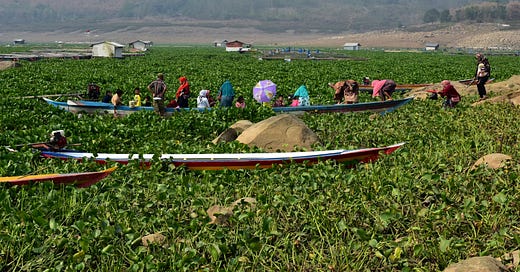My son is 7 and my daughter is 9. I’ll try not to repeat myself too much and some aspects of our days are necessarily repetitive, so if you want more info on something take a look at the previous post, or leave a comment and I’ll try to help.
Tuesday
More spelling—we try to do it first thing while everyone’s feeling fresh. More Schonell and more common exception words. With my son I tried to also make it handwriting practice, so we didn’t do a lot of words but worked hard on writing them clearly.
My daughter then worked in her maths book (the Master Maths at Home series), on perpendicular and parallel lines, regular polygons, interior angles of quadrilaterals and triangles, and drawing regular polygons with a ruler and protractor. We cut out shapes from paper and ripped them up so she could actually see how the interior angles made 180/360 degrees.
Next I worked with my son on his maths book (from the same series), about adding fractions and finding equivalent fractions. Not very exciting to write about but I do find the books make things very clear. For my son, who finds the maths pretty easy and the writing very hard, I often scribe for him.
After a break I read aloud on the sofa, starting with Professor Astrocat’s Atomic Adventure: A Journey Through Physics and The Element in the Room: Investigating the Atomic Ingredients that Make Up Your Home. We’ve been working through Adventures With Atoms and Molecules for my daughter’s chemistry-focused science this year, following the advice in The Well-Trained Mind. I like the Adventures book, but going through the experiments hasn’t felt like quite enough, so as we move towards the end of the academic year I’m trying to bring in some more engaging books to reinforce the learning from the experiments. We’ve only read a page or two of each book but so far, so good. (Next year she moves onto physics, so I’m a bit ahead of myself with the Astrocat book—I got overexcited in the library.)
Then another two pages from The Earth From The Air For Children. We read about logging on the Amazon River, and water hyacinths, which clog up waterways worldwide. Water hyacinths are fascinating—they can double their water coverage every 6-10 days, which means they get out of control very fast. They reduce oxygen in the water, block out sunlight, outcompete other plants, and deposit tons of rotting plant material on the bottom. We watched a video about the three ways humans try to control them—insects, herbicides, and physical removal—and the challenges of each approach. And then we learnt that despite being such brutish thugs, water hyacinth are very good at cleaning water. They can grow happily in sewage/waste water and remove pollutants. Believe it or not, Disney ran a large scale experiment to see if water hyacinth could clean the waste water at Epcot. The study ran for a decade, and was successful. But although the plants cleaned 30,000 gallons of wastewater a day, the park needed to treat over 5 million gallons a day! This fascinating video explains it all, and also goes into detail about how the saturated plants can be used to produce energy. You can read more about water hyacinth on the Kew Gardens website.
Image: Boats in Indonesia making their way through the huge expanse of water hyacinth. Via Unsplash.
The afternoon was taken up with swimming, playing, and Chess Club. I had planned to fit some piano practice in somewhere but we didn’t manage it. The list of things I want to get to each day that we don’t manage would be a much longer post!
Thanks for reading. If you’re not subscribed to How We Homeschool, sign up for free and never miss a post.





Curious how you decide on your science curriculum ideas...I'm in the US (and I have my elementary teaching degree so I don't need to have someone else evaluate my children's learning), so we really can do whatever we want for science each year. How do you decide? I'm juggling kids ages 9, 7, 5, and 2 so I also try to make it family-friendly yet don't want to short change my oldest with higher-level skills.